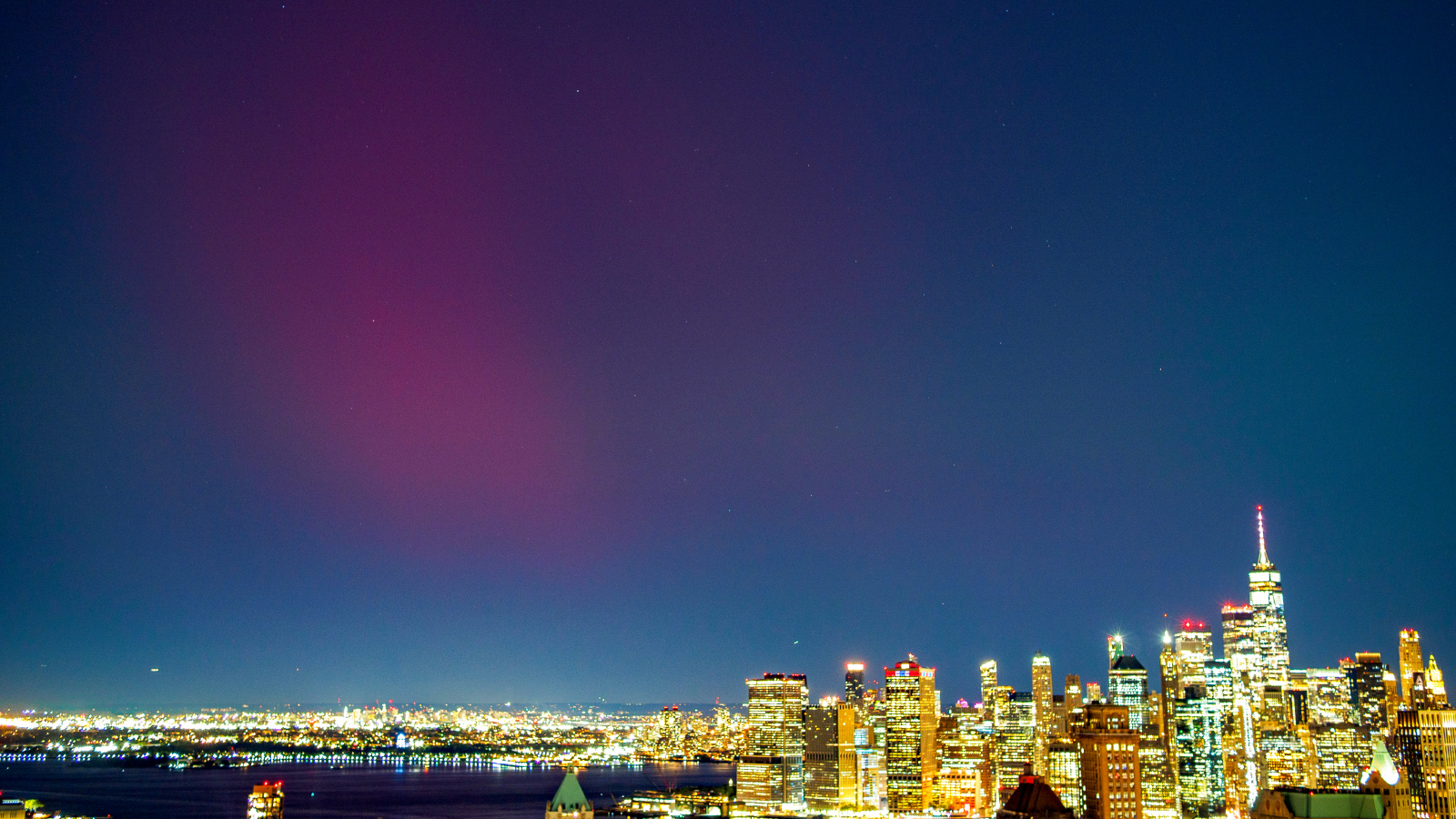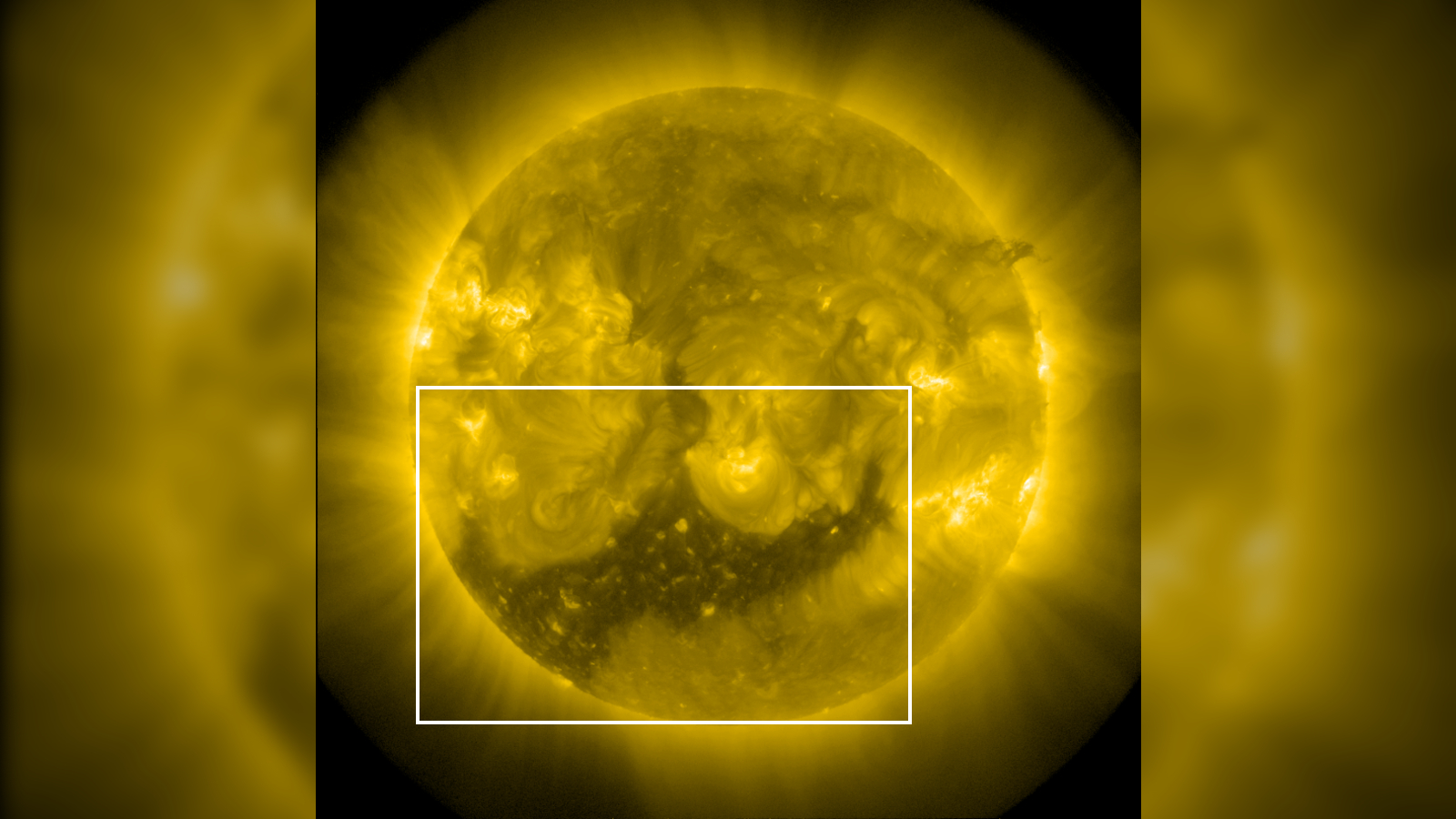Friday the 13th solar storm could bring auroras to 18 US states this weekend
Space weather experts warn that a "moderate" geomagnetic storm could rock Earth over the weekend, potentially lighting the skies with vibrant auroras across large parts of the U.S. and Europe.

Skywatchers in up to 18 U.S. states could witness auroras in the coming days as a "moderate" geomagnetic storm rocks Earth's magnetic field, starting on Friday (June 13).
On Wednesday (June 11), the National Oceanic and Atmospheric Administration's (NOAA) Space Weather Prediction Center issued an initial alert for a G2 (moderate) geomagnetic storm starting on Saturday (June 14). On Friday, the center released an updated warning that the storm could begin later the same day. The space weather event is predicted to end on Sunday (June 15) or Monday (June 16).
The disturbance has the potential to rise to a G3 (strong) geomagnetic storm over the weekend, according to Spaceweather.com, but this is not guaranteed. Some other outlets have reported that the storm could reach G4 (severe) status. However, these reports have likely arisen from confusion surrounding a statement from the U.S. Naval Research Laboratory, which was explaining what happened during a different G4 storm that occurred earlier this month, and the upcoming storm will not be anywhere near as intense.
Geomagnetic storms are disturbances to Earth's magnetic field, or magnetosphere, triggered by fluctuations in the solar wind. They are normally caused by giant clouds of magnetized particles from erupting solar flares, known as coronal mass ejections (CMEs). However, in this case, the disturbance is being caused by a co-rotating interaction region — turbulence in the solar wind caused by fast-moving streams colliding with slower wind ahead of them — that originated from a large "coronal hole" on the solar surface.
These disturbances can squeeze Earth's magnetosphere, potentially causing widespread aurora displays at unusually low latitudes. They can also cause temporary radio blackouts, damage power infrastructure on the ground and cause satellites to fall from the sky as Earth's atmosphere soaks up excess energy and expands. (Geomagnetic storms are classified using a scale that ranks their intensity from G1 (minor) to G5 (extreme) — which is very rare.)
Related: The US isn't prepared for a big solar storm, exercise finds

The 18 states that could see auroras starting tonight are Alaska, Montana, North Dakota, Minnesota, Wisconsin, Michigan, South Dakota, Maine, Vermont, New Hampshire, Idaho, Washington, Oregon, New York, Massachusetts, Connecticut, Rhode Island and Wyoming, according to Live Science's sister site Space.com.
Get the world’s most fascinating discoveries delivered straight to your inbox.
The aurora could also be seen in the U.K. and parts of Europe. However, there is no guarantee that you will see auroras if you live in these areas, as your view may be obscured by cloudy weather, haze from wildfires or light pollution.
Solar activity has been high in recent years thanks to solar maximum — the most active phase of the sun's roughly 11-year cycle of activity, when our home star's magnetic field completely flips. This phase began in early 2024, much earlier than initially predicted, and is likely now coming to a close. But solar activity could remain high for several years to come.
In May 2024, Earth experienced a G5 geomagnetic storm — the most powerful in 21 years, with some of the most widespread auroras in the last 500 years — after at least five different CMEs hit our planet in quick succession. This storm was so powerful that it caused tractors and other GPS-controlled machinery to dance from side to side across several U.S. states.

Harry is a U.K.-based senior staff writer at Live Science. He studied marine biology at the University of Exeter before training to become a journalist. He covers a wide range of topics including space exploration, planetary science, space weather, climate change, animal behavior and paleontology. His recent work on the solar maximum won "best space submission" at the 2024 Aerospace Media Awards and was shortlisted in the "top scoop" category at the NCTJ Awards for Excellence in 2023. He also writes Live Science's weekly Earth from space series.
You must confirm your public display name before commenting
Please logout and then login again, you will then be prompted to enter your display name.


